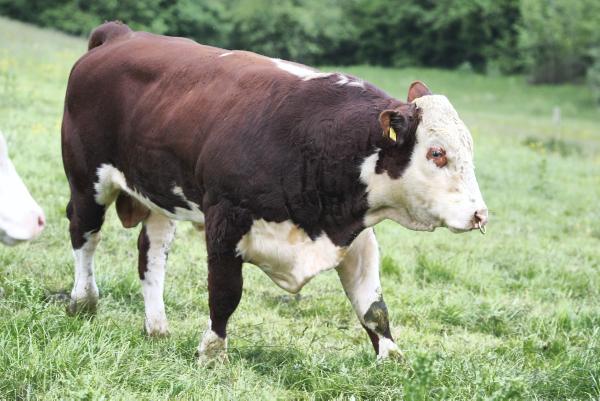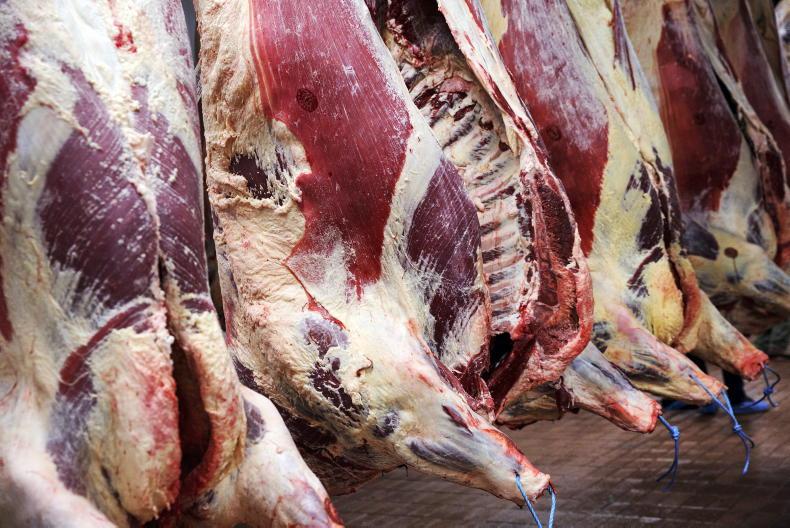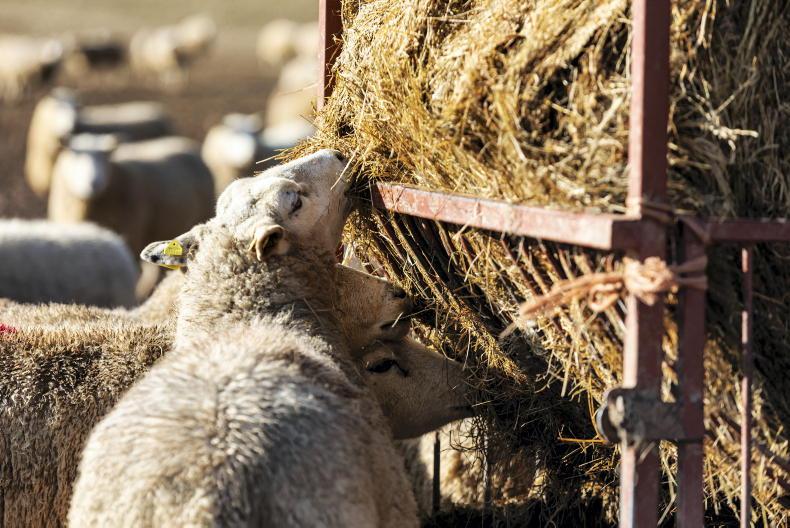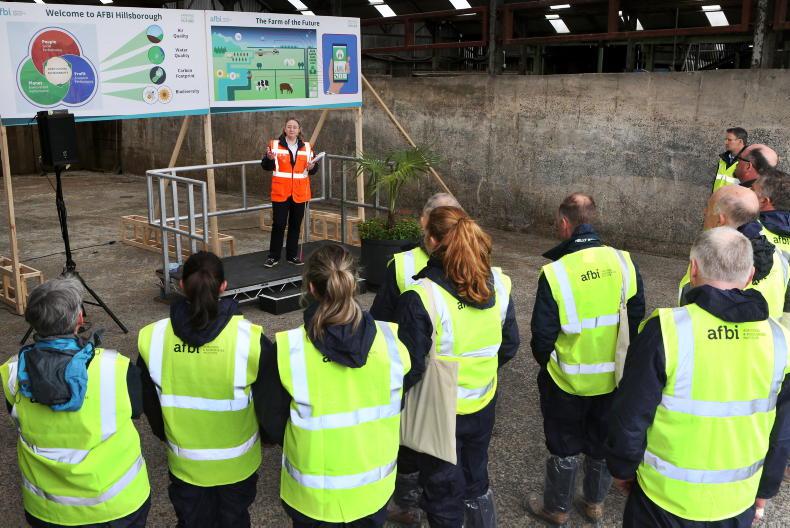For many pedigree breeders, presentation at sale is a major focus in optimising the sale price. However, breeders should be aware that it is not only the physical appearance of an animal that will affect sale value.
Ensuring the animal has good functionality, is on the correct plane of nutrition and is physically ready for work, are equally as important. The following steps will detail some of the other areas bull producers should focus on prior to the sale to make their bull more marketable to customers.
Key steps
1. Advanced planning and target sale date
For pedigree breeders, the sale date represents their single opportunity to realise an entire year’s production from the herd.
So to maximise the potential value of the bull, breeders need to plan well in advance of the sale date. The advice is to target the sale that best suits your bull.
Base your decision on age, weight target, sale type and quality. Also do some research and know the current realistic market value of your bull.
Once the target sale date is identified, every other management decision, from feeding strategy to health programme, will be set by this.
Having your bull in peak condition on sale day is always the aim and this is solely in the breeder’s control.
Bear in mind that, to qualify for breed society sales, certain weight for age and scrotal circumference targets must be met.
And for pedigree sales, some societies have a limit entry of high quality bulls based on pre-sale inspection and genetic merit.
The golden rule always holds – ‘by failing to plan, you are preparing to fail’.
2. Nutrition and feed management
An ideal nutritional programme for young bulls should be moderate in cost, allow for rapid growth and avoid excessive condition.
It should also avoid digestive problems that may have an impact on animal performance or reduce soundness.
Pedigree bulls have a high requirement for nutrients, particularly during the stage of maximum growth and muscle deposition.
Prior to sale, pedigree bulls are typically offered ad-lib concentrates with intake targeted at 2% of bodyweight.
For instance, target intake for a 600kg bull will be 12kg to 13kg of meal, with a daily gain of 1.7kg to 1.8 kg/day and a food conversion ratio of 6kg to 7kg/day.
To be in ideal condition at sale, breeding bulls need to be well-grown, covered but not fat. To achieve this spec, the guideline for continental breeds is to offer ad-lib access to an energy dense diet for 120 to 150 days prior to sale. Reduce this by 30 days for traditional breeds.
A bull diet should be high in energy and contain the correct amounts of protein and minerals.
Overall, diet spec should have a minimum energy target >0.95 UFV/kg or >12.2 MJ/kg; crude protein content of 12% to 14% plus an appropriate bull mineral premix (20g/kg per 100kg liveweight), fortified with zinc and salt.
Concentrate ingredients should be of high quality and consistency. Low digestibility and variable ingredient sources should be avoided as their variability can lead to digestive upsets.
The bulk of the concentrate mix should consist of high quality reliable ingredients such as barley and maize grain/flaked (energy sources), soyabean meal (protein source) and sugar beet pulp (digestible fibre).
These ingredients are highly palatable, nutritionally safe and promote intake. Always ensure your bull has easy access to clean water – essential to maintain digestive function.
Feeding management is an art. Poor feed management, along with improper diet formulation, can lead to nutritional disorders resulting in acidosis and laminitis.
A bout of acidosis can have detrimental consequences to the potential sale of a breeding bull.
To reduce this threat, the breeder should introduce concentrates gradually over a three to four week period and, once bulls reach ad-lib, never let them be without meal.
Also, ensure a minimum amount of long fibre is available, ideally good quality hay offered at 10% to 15% of the overall diet or 1kg to 2kg per head daily.
3. Lameness and hoof care
Soundness of legs and feet is the most important functional issue with breeding bulls. If bulls get lame, they cannot be presented for sale and performance will also fall.
Lameness is largely a management problem. It is mainly nutrition related (poor feed management and diet formulation) but it can also be impacted by environment or genetics.
As well as laminitis, attention must also be given to the bull’s feet prior to sale. Hoof claws need to be of equal size for balanced weight distribution.
If hoofs need to be trimmed, this should be done between the start and mid-way through the feeding period to allow time for regrowth, which acts as a cushion.
4. Housing and husbandry
Bulls need a proper environment so they can thrive. Group or batch bulls based on their proposed sale date, age and liveweight.
Mixing lighter and younger bulls does not work – it can lead to bullying and poor thrive in the younger animal.
Fighting and bullying can also lead to serious injury. Keep group size small, no more than five bulls per group, and match based on age and weight.
This needs to be planned to keep these bulls together until the sale day.
Once bulls are dry and comfortable, they will convert feed more efficiently and gain weight faster. Pens should be large enough so bulls can exercise and also get away from each other when necessary.
Exercise will help keep the bulls active and physically fit. Bulls housed away from heifers or cows tend to stay quieter and do less riding and fighting.
5. Hair growth
To encourage hair growth, wash your bull monthly. Water is the best way to promote hair growth as it helps dissipate heat and, more importantly, it lowers the temperature of the hair follicle, thereby stimulating growth.
Washing the hair and clipping the coat well in advance of the show encourages regrowth and makes a fine healthy coat.
Brushing the hair regularly will strengthen hair and remove lice and dead hair. Oil or fat additives can be given to increase coat shine.
Bulls on high levels of feeding are more prone to lice and mange. To treat, use a good ivermectin product at regular intervals.
6. Training and showing
Training should be done well in advance of sale – ideally, start training calves from three to four weeks of age. Once an animal gets used to a halter, they will never forget it. Training a mature bull is more difficult. Initially, leave the animal tied up for an hour or two and repeat for three to four days.
On the third or fourth day, attempt to walk out the bull in an enclosed yard. Once trained, continue intermittently over the next few months.
Ideally, have the bull ringed or put snaffles on, which gives you further control.
Keep both the halter and the rope short. Halter training should begin 12 to 15 weeks before the sale date. It is your responsibility to ensure that your animal is trained before the show and sale.
7. Herd health plan and fertility testing
Minimise health problems with a well-designed herd health programme developed with your veterinarian.
Prior to sale, breeding bulls must be tested free from infectious diseases such as BVD, IBR, letpo and Johnes disease.
Pedigree herds implementing a herd health programme give prospective customers reassurance that best practice has been followed in this herd.
Pedigree herds implementing a herd health programme, combined with bull fertility testing, offer prospective customers excellent reassurance regarding the health and fertility status of their herds. Highlight this information on sale day as it will help drive demand for your bull.
8. Advise the purchaser
At sale time, pedigree bulls are well conditioned. Rapid changes in nutritional levels over a short period of time may cause a reduced reproductive performance.
To limit this risk, the breeder should recommend the gradual reduction of concentrate feed. By the time bulls are turned out for breeding, meal should be completely removed.
Good practice is to keep them on a similar diet but limit bulls to only 60% to 70%.
Concentrate levels should then be reduced by approximately 10% per week until the optimal amount of condition loss has been reached.










SHARING OPTIONS